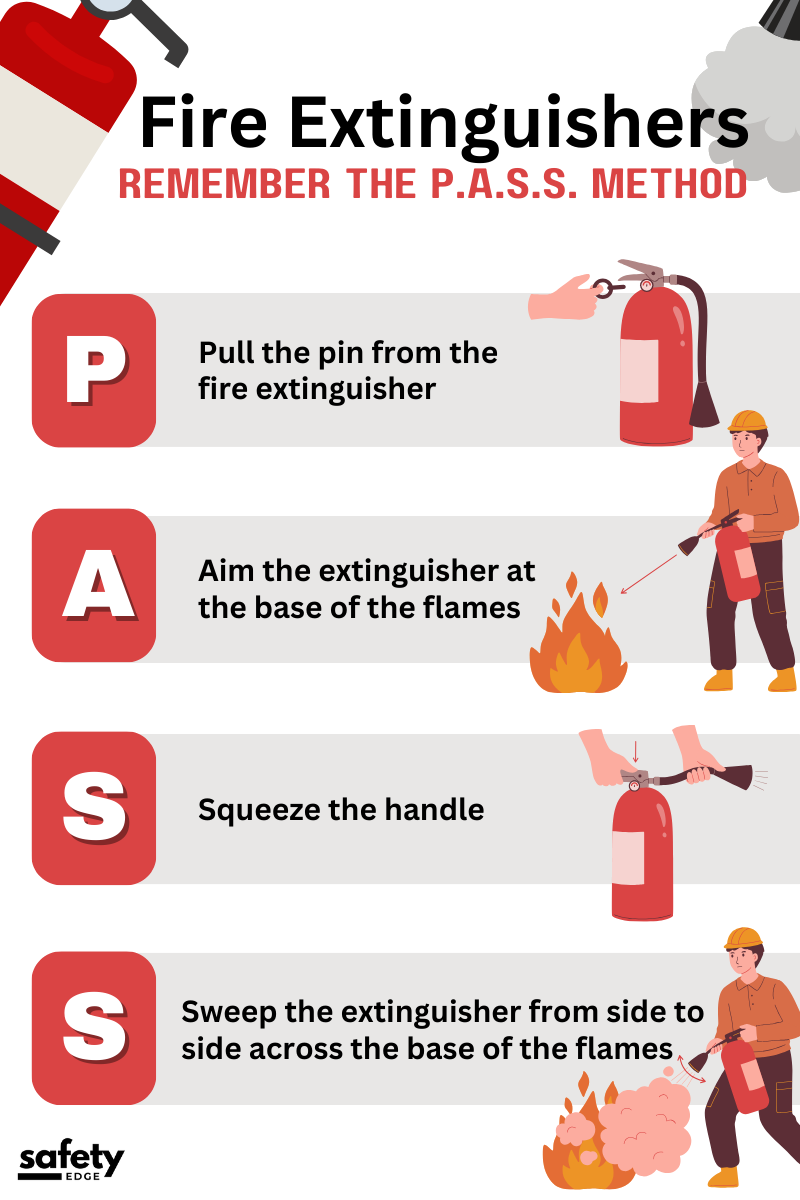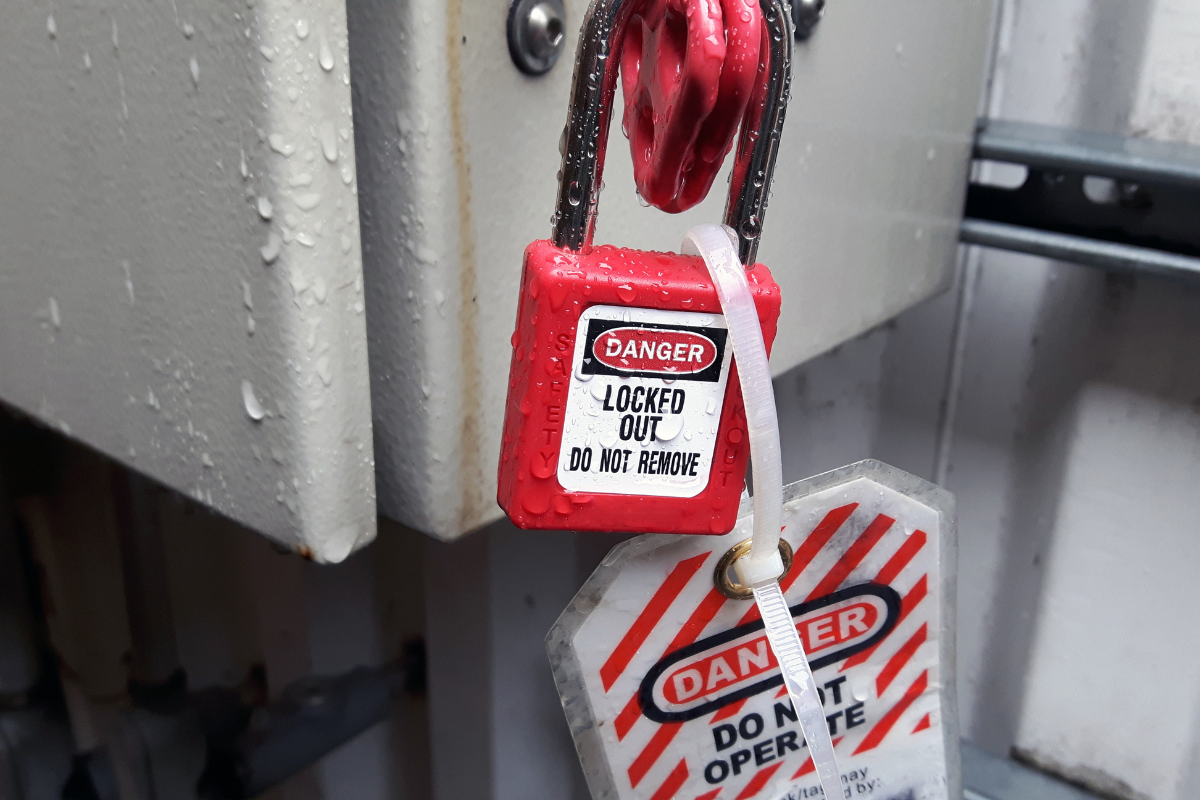Fire Extinguisher Use and Inspection Safety Toolbox Talk
Fire extinguishers serve as a crucial first line of defense, providing a means to put out small fires before they escalate. However, their use is not advisable for large or quickly expanding fires. During such emergencies, the priority should be personal safety—ensuring immediate evacuation and alerting emergency services to handle the fire. Material possessions, should never take precedence over human safety. Therefore, it is vital to be educated on the proper usage of fire extinguishers, as well as their limitations.

P.A.S.S. Method
The P.A.S.S. method simplifies the operation of a fire extinguisher into four easy-to-recall steps, designed to facilitate quick and effective action during a fire emergency. By becoming familiar with this method, users can enhance their preparedness to respond promptly in the event of a fire, optimizing the use of the extinguisher for safety and effectiveness.
- P – Pull the pin at the top of the extinguisher, which unlocks the mechanism and allows you to discharge the extinguisher. This safety feature prevents accidental activation.
- A – Aim the nozzle at the base of the fire, not the flames. Targeting the fire’s source is crucial for extinguishing the fuel that’s feeding the fire.
- S – Squeeze the handle to release the extinguishing agent. Once squeezed, the pressurized contents will discharge to combat the fire.
- S – Sweep the nozzle from side to side, covering the area of the fire evenly. This technique ensures that the extinguishing agent is spread across the entire base of the fire to put it out effectively.
Fire Extinguisher Limitation
Fire extinguishers, while invaluable for initial fire response, have inherent limitations. They contain a finite amount of extinguishing agent, suitable primarily for small, contained fires and can be depleted in a matter of seconds. Moreover, extinguishers are categorized for specific types of fires—electrical, grease, or paper—and using the wrong type can be ineffective or hazardous. Their performance is also contingent on proper maintenance; an extinguisher that has not been regularly checked or is past its expiration can fail when needed most. In addition, their effective range is limited, usually requiring the operator to be within a few feet of the flames, which can pose a significant risk if the fire has grown beyond a manageable size. Recognizing these constraints is key to using fire extinguishers wisely and acknowledging when evacuation and professional intervention are necessary.
Fire Extinguisher Maintenance and Inspection
Regular maintenance and inspection are crucial for ensuring that fire extinguishers remain reliable and effective in emergencies. This process includes checking that seals and tamper indicators are intact, verifying the extinguisher is fully charged and pressurized through inspection gauges, and ensuring that there is no physical damage, corrosion, or leakage. Annual professional inspections are mandated by safety regulations, but routine checks by the designated safety personnel should be conducted monthly. These checks involve confirming accessibility, clear labeling, and proper mounting of the extinguishers. Additionally, every few years, extinguishers require a thorough examination that may include a hydrostatic test to verify the integrity of the shell. Documentation of all inspections, maintenance, and tests should be meticulously maintained to provide a record of compliance and readiness. Failure to uphold these standards can not only lead to malfunction when the extinguisher is needed but can also result in legal ramifications and endanger lives and property.
Fire Extinguisher Safety Toolbox Talk Summary
Fire extinguishers are an essential safety tool for containing small fires, but they are ineffective against larger conflagrations, which call for evacuation and professional firefighting intervention. Familiarity with the P.A.S.S. method—Pull, Aim, Squeeze, Sweep—is crucial for efficient use during an emergency. However, it’s important to recognize the limitations of fire extinguishers, such as their finite capacity, classification for specific fire types, range limitations, and the necessity for regular maintenance. Consistent inspection and upkeep, including monthly checks and annual professional reviews, are critical to ensure their functionality and compliance with safety standards. Proper documentation of these inspections and maintenance is equally important to verify readiness for use and adherence to legal requirements.



